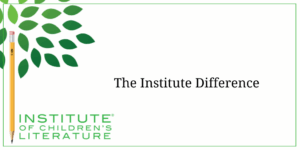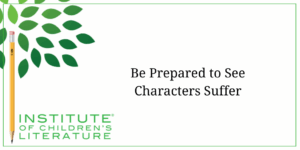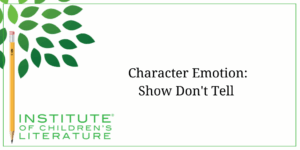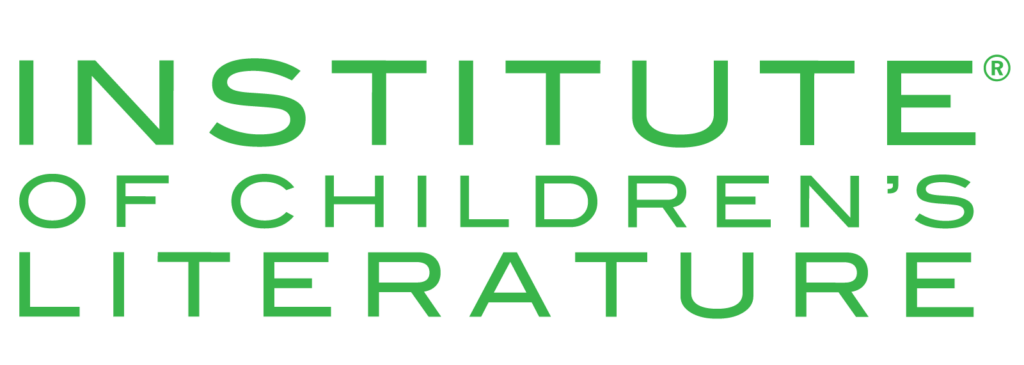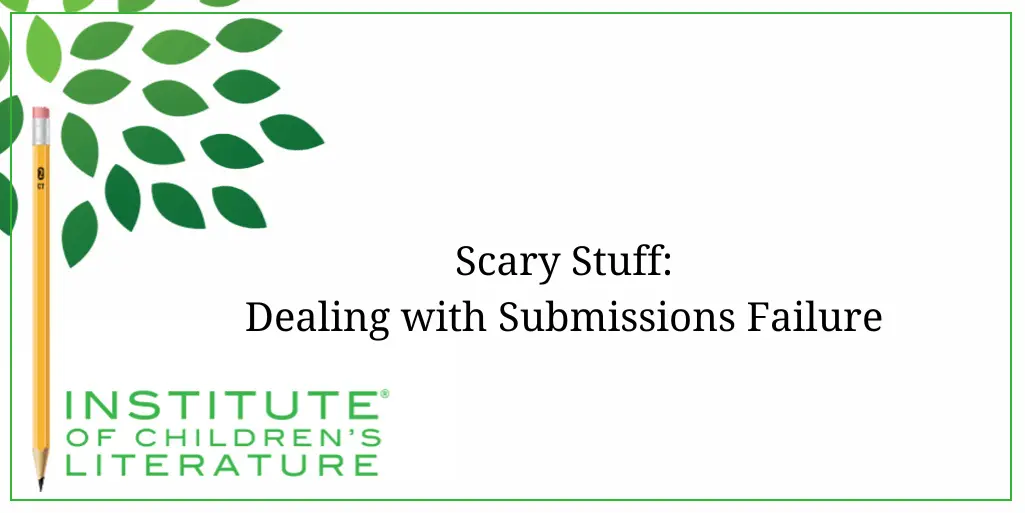
- Date: October 31, 2024
- Author: Jan Fields
- Category: Writing for Children Blog
- agents, book proposal, query, Submissions
We teach our students how to write and get published!
View our Course Catalog >
Dealing with Submissions Failure
I like to think happy thoughts when it comes to writing. I'll write something. People will love it. Birds will sing. And sometimes it happens exactly like that. This is especially true if I've worked hard on my writing (and also put a lot of bird feeders in my yard, for the bird-singing part). But sometimes it doesn't work like that at all.
 Sometimes I put time into something that doesn't pay off. Some ideas don't work like I thought they would. And sometimes I send out submissions and they are rejected or ignored.
Sometimes I put time into something that doesn't pay off. Some ideas don't work like I thought they would. And sometimes I send out submissions and they are rejected or ignored.
In other words, sometimes I fail.
Failure is scary, so today—on our scariest of days—I wanted to talk about the most horrifying part of writing life: when a submission fails.
Sometimes I fail. Sometimes you will too. And failure can have serious repercussions for your motivation and creativity. Failure can start negative self-talk that doesn't help you move on. Failure is scary. But it can also be a time for learning—if you allow it. That means overcoming the negative feelings and taking a bold, brave look at what caused the failure.
Submission Failure #1: I rushed.
The number one reason a submission doesn't land a contract is rushing. I'm as guilty of this as anyone else. When I'm done with a story, I am delighted to have accomplished this difficult thing. I want to launch it into the world. This is especially true while the glow of love for this creation is blinding me. This is a normal condition for most writers.
Unfortunately, this is the worst possible time to launch this creation into the world. It's not ready. I'm not ready. You're not ready. Try to stay calm. That is, of course, easier said than done. This is part of the reason I have a procedure for works that is fairly set in stone: revision, polish, and rest. This helps cool the heat of the rush.
 Having a procedure, one that begins to pick apart a manuscript in a methodical way will help to cool your ardor and give you clearer sight into what you've actually accomplished. A procedure will help you see what works and what doesn't. This is even better if you can enlist some other readers to help you get a clearer vision of the piece by giving their own feedback.
Having a procedure, one that begins to pick apart a manuscript in a methodical way will help to cool your ardor and give you clearer sight into what you've actually accomplished. A procedure will help you see what works and what doesn't. This is even better if you can enlist some other readers to help you get a clearer vision of the piece by giving their own feedback.
Revision isn't the only thing you need to take time and care doing. Every element of your submissions needs to be written and revised with a cool head. You don't want mistakes in your proposal letter, query letter, or any opening correspondence. Soon enough editors may be forced face the fact that I am a typo queen. They don't need to see it in my initial contact. That doesn't mean they never see mistakes in a submission, or they always reject a piece that has a typo. I've sold things after making glaring mistakes in query letters, but it's not a good idea to give editors or agents reasons to move on.
The truth is that agents and editors are busy. Busier now than ever before. Many have days that are packed with work they simply must accomplish. They want to find the next wonderful project. They truly do. But that is a thing they squeeze in around so many other things. As a result, you have to impress them fast. You have to engage them quickly. And you have to avoid red flags. Mistakes in your queries and proposals at this stage can be the red flag that gives the agent or editor permission to move on. I expect it's played that role for me far too many times. And that's on me. I rushed. And I paid the price.
Submission Failure #2: I under researched.
Under researching was a serious problem for me early in my career. I had a degree in journalism and practically zero idea how to submit manuscripts. Everything wasn't at my fingertips on the web when I started. Finding markets meant going to bookstores and looking at books similar to what I wanted to write and discovering which publishers published them. Or it meant going to newsstands and buying piles of magazines to find one that “clicked” with the sorts of things I wanted to write. Research took time and was virtually always outdated.
But there were good aspects of it taking time. I didn't give up early. But I still missed things. I jumped to conclusions based on a single issue of a magazine or a few books I spotted in a bookstore. I sent things that really had no chance with a specific publisher. In those cases, the rejection wasn't because my submission was bad or flawed. It was because my market research was flawed.
 Today, there is an abundance of information available for anyone wanting to research publishers and agents. Whatever you need to know can be found online by the persistent researcher. But this ease can lead to lazy habits and unfortunate choices like shot-gunning manuscripts to publishers with little consideration for whether it's a good fit.
Today, there is an abundance of information available for anyone wanting to research publishers and agents. Whatever you need to know can be found online by the persistent researcher. But this ease can lead to lazy habits and unfortunate choices like shot-gunning manuscripts to publishers with little consideration for whether it's a good fit.
This kind of behavior is bad for the business of writing and publishing (mostly by wearing out agents and publishers with a tsunami of inappropriate submissions and thus leading to so many closed submissions doors). Often the publishers who offer the greatest potential for writers aren't available directly for submission anymore. Shot-gun submissions behavior was one of the driving forces behind closing to unagented manuscripts.
And even in the face of what we have wrought, there are plenty of writers sending every submission to every open door. They're doing it to smaller publishers, who still have open submissions policies. These writers are wasting their time and the time of the publishers. More than that, shot-gun submissions can't be personal because research and personalized submissions take time. The whole point behind shot-gunning is that the writers are in a rush. And rushing (as I mentioned above) is the enemy of success.
Real research and personalized submissions are the keys to overcoming this submission pitfall. Personalized submissions increase your odds of success, but they take time to research and time in the proposal creation. Well-researched submissions follow publisher guidelines to the letter. Shot-gun submissions simply follow whatever the writer decided was “standard.”
If you want better odds for your submission, personalized submissions are the way to go. Find out what the publisher wants to see. Ask yourself honestly if they publish the sort of thing you have on offer. Then tailor your submission for them and no one else. A great place to start is the ICL Book and Magazine Market Guides for Children's Writers. You can research the type of books and articles published by a publisher, if and how they accept unagented submissions, find out the percentage of first-time authors they work with, discover information on their pay structure, and so much more. These guides are updated with details from the editors each year.
That doesn't mean you must only submit to one publisher at a time. But it does mean that each submission needs to be specific and personal. And that means you'll submit to fewer publishers at a time. On the positive side, it also means you can learn as you're in the process. And each wave you send out will usually be better than the last. This kind of careful submission strategy gives you the best chance of success.
Submission Failure #3?: I did everything right.
Sometimes you send out a submission that was exactly the sort of thing the publisher publishes, and they still don't buy it. You followed the guidelines precisely. But your submission never received a response. This is because there are so many things outside of your control. Maybe you sent the submission to a publisher that was a great match, and you followed all the rules, and you made sure everything about the submission was clean and perfect. So why didn't they buy it?
 Many different things can prevent a publisher from buying a good book (or even a great book) that was submitted well. Most publishers plan the number of books they will publish in a specific season. If they have already filled the list, they are likely to pass on your book (unless it wowed them beyond all measure, and they beg you to let them hold it for the NEXT list. This has happened to me, and I let a publisher hold a series for two years because I wanted it to be published by that publisher).
Many different things can prevent a publisher from buying a good book (or even a great book) that was submitted well. Most publishers plan the number of books they will publish in a specific season. If they have already filled the list, they are likely to pass on your book (unless it wowed them beyond all measure, and they beg you to let them hold it for the NEXT list. This has happened to me, and I let a publisher hold a series for two years because I wanted it to be published by that publisher).
Some publishers won't pick up a book if it is too high concept, because smaller publishers simply aren't set up to handle actual bestsellers. They have smaller print runs than bigger publishers. Printing and storing books are expensive, and small publishers may have tighter budgets. So, they may actually pass on a book that has strong bestseller potential simply because they cannot do the book justice. Also, publishers won't pick up a book if an important part of it is too similar to a book they've already published or a book that is already in the works.
Some publishers will also pass on a book if they feel the trend it fits into is weakening or dying back, which can make the book a poor seller once it hits the market. None of those reasons would have anything to do with the quality of the book you sent or how well you handled sending it.
Sometimes books simply don't sell, and it's not your fault. Sometimes the only thing you can learn from a failure to sell is that this is a challenging business we've all chosen.
This can sound depressing at first, but it still means that the best response to any rejection is to look critically at your book.
- Do you still believe in it?
- Do you believe it should sell?
- Are you proud of it?
- Is it the best you can do?
If the answer to all those questions is yes, then send it out again. Even with fewer publishers accepting submissions than in the past, there are still many who do. Keep digging. Don't give up. And don't stop writing. Success is out there. It's not easy, but if you're a writer, it's worth it.
Ultimately, the only way to ensure failure is quitting.
Related Articles
With over 100 books in publication, Jan Fields writes both chapter books for children and mystery novels for adults. She’s also known for a variety of experiences teaching writing, from one session SCBWI events to lengthier Highlights Foundation workshops to these blog posts for the Institute of Children’s Literature. As a former ICL instructor, Jan enjoys equipping writers for success in whatever way she can.

